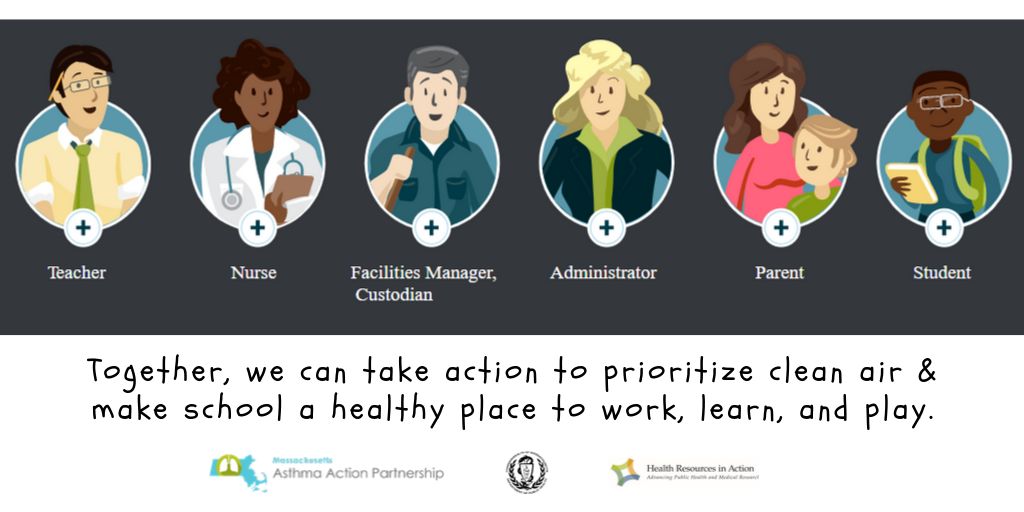MAAP, the Massachusetts Department of Public Health’s Asthma Prevention and Control Program, and Health Resources in Action are delighted to announce the release of a new resource: Clearing the Air: An Asthma Toolkit for Healthy Schools. This toolkit contains sample policy language, best practices, and curated resources and tools to help schools create an asthma-friendly learning and working environment. Nine policy and practice areas have been identified as target areas to help improve air quality inside and around school buildings:
School-wide environmental health and safety management
Green cleaning and environmental purchasing programs
Integrated pest management
Leaks and moisture
Clutter
Outdoor air pollution
Fragrance
Tobacco
Clinical asthma management in the school setting
Asthma is one of the most common chronic diseases in childhood. In any given classroom, it is likely that two or three students have asthma, and in larger classrooms and in some urban settings, that number is likely to be even higher. When children experience asthma symptoms, they often stay home from school, or they might have a hard time participating when they are in school. Research shows that children who have a lot of absences in preschool, kindergarten, and first grade are much less likely to read at grade level by the third grade. These students are also four times more likely to drop out of high school.
Since children spend a lot of their time in school, an asthma-friendly environment means healthier students who are ready to learn. The benefits of an asthma-friendly school can include:
Better attendance
Improved academic performance
Improved focus and physical stamina
Enhanced student and staff productivity
Fewer restrictions on participation in physical activities
Fewer symptoms and medical emergencies
By taking action together, we can help to ensure that all of our students have a better opportunity to thrive in school and beyond. Everyone – including families, school staff, students, and community groups – has an essential role to play. The school community can help by:
Educating children, parents, and staff about asthma and the school environment
Identifying and reducing potential asthma triggers in the school
Developing and implementing policies that create a supportive, asthma-friendly environment
Whether your school is considering a comprehensive wellness policy that includes environmental health and safety, or if you want to start on more modest projects, you’ll find guidance and resources throughout the toolkit – from building administration buy-in to identifying issues around the school to implementing best practices and policies to address the issues. Case studies are also available to show how schools and school districts across MA are making advances to improve the health of students, especially those with asthma. Take action together to make school a place where staff and students can work, learn, and play in the healthiest environment – use the Clearing the Air toolkit for guidance and inspiration.
STAY TUNED! MAAP and the MA DPH are planning a walk-through webinar. We’ll show you how to navigate this toolkit and its resources and discuss different ways to use the toolkit in your own school. More information to come!
SPREAD THE WORD! Click here for our promotion kit, which includes ready-to-share email, web and social media copy as well as graphics to download and send with your messages. We’ve been working hard on this toolkit, and we encourage you to share it with your members and networks!






